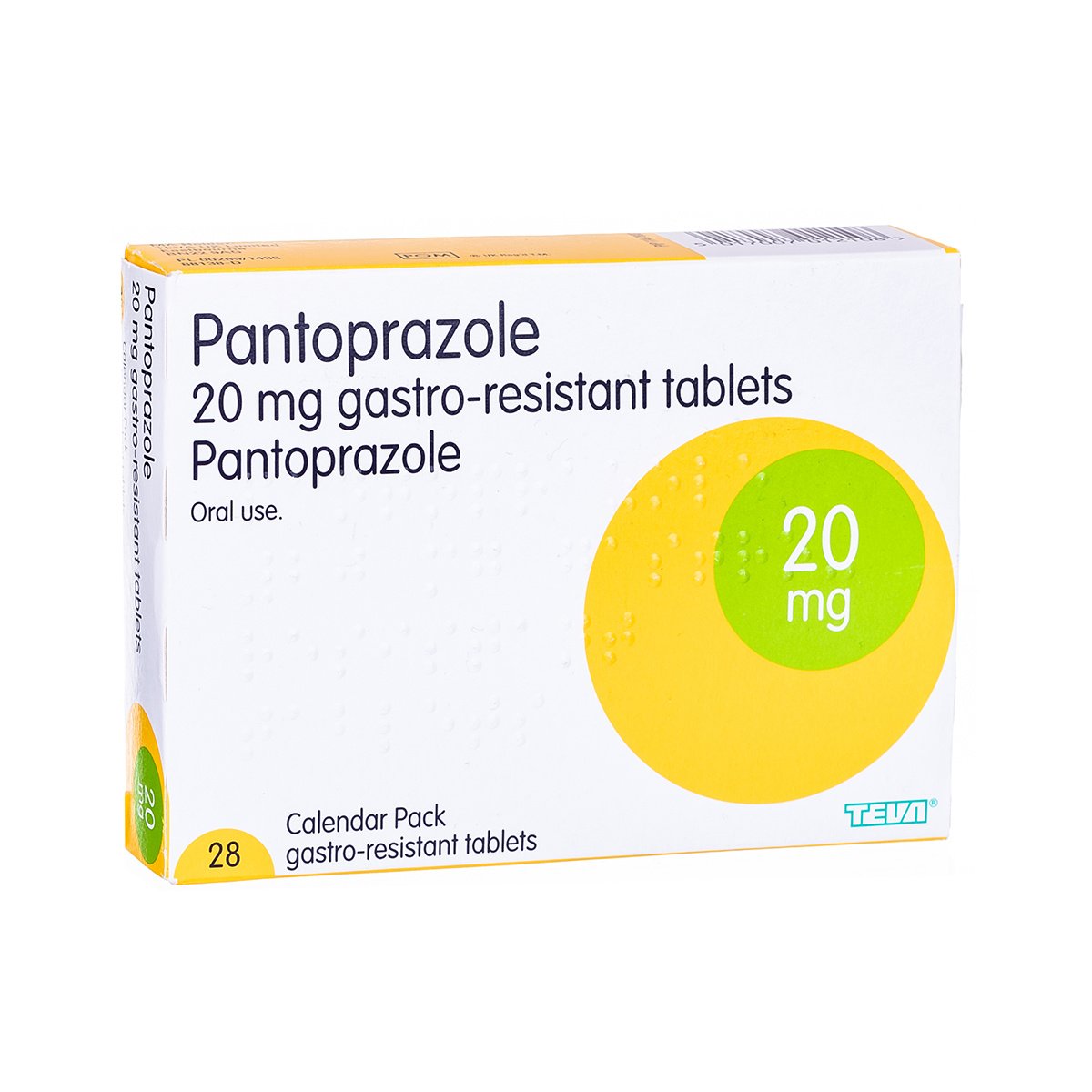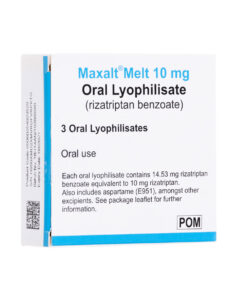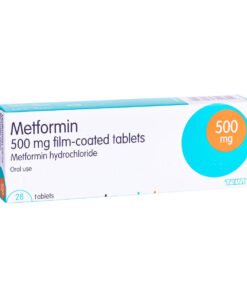Pantoprazole 20 mg
€51.09
Buy Pantoprazole 20 mg online at best Meds in EU. Effective acid reflux medication. Online doctor consultation. Free prescription. Dispensed by a regulated EU pharmacy. Discreet delivery.
Pantoprazole 20 mg: Uses, Mechanism, Dosage, and Safety Information
Pantoprazole 20 mg is one of the most widely prescribed proton-pump inhibitors (PPIs) used to treat conditions related to excess stomach acid. Whether prescribed for gastroesophageal reflux disease (GERD), erosive esophagitis, peptic ulcers, or Zollinger-Ellison syndrome, Pantoprazole has become a cornerstone in modern gastrointestinal medicine.
This article explores everything about Pantoprazole 20 mg — including its mechanism of action, approved uses, pharmacology, dosage forms, safety profile, and frequently asked questions — so readers can understand how and why this medication is used under medical supervision.
What Is Pantoprazole 20 mg?
Pantoprazole belongs to the proton pump inhibitor (PPI) class of medications, which work by blocking the enzyme in the stomach wall responsible for producing acid. The active ingredient, pantoprazole sodium sesquihydrate, selectively inhibits the H⁺/K⁺-ATPase enzyme located in the gastric parietal cells.
The 20 mg strength is typically prescribed for mild to moderate acid-related conditions or for maintenance therapy following initial healing with higher doses.
Pantoprazole was first developed in the 1980s and later approved for medical use in the 1990s. It is now available worldwide in both prescription and over-the-counter forms, depending on jurisdiction.
Pantoprazole 20 mg: Key Information Table
| Parameter | Details |
|---|---|
| Generic Name | Pantoprazole Sodium Sesquihydrate |
| Brand Names | Protonix®, Controloc®, Somac®, Pantoloc® (varies by region) |
| Drug Class | Proton Pump Inhibitor (PPI) |
| Strength Discussed | 20 mg delayed-release tablets |
| Primary Mechanism | Irreversible inhibition of gastric H⁺/K⁺-ATPase enzyme |
| Onset of Action | 2–3 hours after oral dose |
| Peak Plasma Time | ~2.5 hours |
| Half-Life | 1–1.5 hours (biologic effect lasts longer due to irreversible binding) |
| Bioavailability | ~77 % |
| Metabolism | Hepatic (CYP2C19, CYP3A4) |
| Elimination | Renal and fecal routes |
| Pregnancy Category | Generally considered Category B (consult physician) |
| Storage Conditions | Below 25 °C, away from moisture and direct sunlight |
Mechanism of Action
Pantoprazole 20 mg works at the molecular level by blocking the final step of gastric acid production.
-
Target Site:
It targets the proton pump (H⁺/K⁺-ATPase) enzyme complex within the secretory canaliculi of gastric parietal cells. -
Binding:
Pantoprazole is converted to its active sulfenamide form in the acidic environment of the parietal cells. -
Inhibition:
This active compound binds covalently to cysteine residues on the proton pump, irreversibly inhibiting acid secretion. -
Duration of Effect:
Even though the plasma half-life is short, the inhibitory effect lasts for 24 hours or longer, until new proton pumps are synthesized.
By suppressing acid secretion, Pantoprazole provides effective symptom relief from heartburn, promotes healing of ulcers, and prevents relapse of acid-related diseases.
Medical Uses of Pantoprazole 20 mg
Pantoprazole 20 mg is used for a range of gastrointestinal conditions associated with excessive stomach acid.
1. Gastroesophageal Reflux Disease (GERD)
GERD occurs when stomach acid frequently flows back into the esophagus, causing irritation, heartburn, and regurgitation. Pantoprazole 20 mg helps by reducing acid production and allowing the esophageal tissue to heal.
2. Erosive Esophagitis
In moderate to severe GERD cases where the esophageal lining is damaged, Pantoprazole accelerates mucosal healing and reduces inflammation.
3. Peptic and Duodenal Ulcers
Pantoprazole 20 mg is used in combination with antibiotics to eradicate Helicobacter pylori, the bacteria responsible for most ulcers, and to prevent ulcer recurrence.
4. Zollinger-Ellison Syndrome
This rare condition involves tumors that cause excessive acid production. Pantoprazole, often in higher doses, is prescribed to manage acid hypersecretion.
5. Prevention of NSAID-Induced Ulcers
Long-term users of non-steroidal anti-inflammatory drugs (NSAIDs) may take Pantoprazole to reduce the risk of gastric ulcers.
6. Functional Dyspepsia and Gastritis
While not a first-line therapy, Pantoprazole may be recommended to manage discomfort or inflammation associated with chronic gastritis.
Pharmacokinetics and Pharmacodynamics
Pantoprazole 20 mg tablets are designed with enteric coating to prevent degradation in the stomach acid. This ensures that the drug is absorbed in the small intestine, where it reaches peak plasma levels in about 2–3 hours.
The drug’s systemic bioavailability is approximately 77 %, and food intake has minimal impact on absorption. Once metabolized in the liver (CYP2C19 and CYP3A4), Pantoprazole’s metabolites are excreted mainly via urine (71 %) and feces (18 %).
Although the plasma half-life is only 1–1.5 hours, its biological effect lasts much longer due to irreversible inhibition of proton pumps. Full acid suppression can take several days of regular use.
Dosage and Administration
Pantoprazole 20 mg is generally taken once daily, preferably in the morning before breakfast. It should be swallowed whole with water and not crushed or chewed, as this destroys the enteric coating.
Typical Adult Dosages
| Condition | Recommended Dose | Duration of Therapy |
|---|---|---|
| GERD / Heartburn | 20 mg once daily | 4–8 weeks |
| Maintenance Therapy | 20 mg once daily | Long-term, as advised |
| Peptic Ulcer (with antibiotics) | 20–40 mg once daily | 7–14 days |
| NSAID Ulcer Prevention | 20 mg daily | Throughout NSAID use |
| Zollinger-Ellison Syndrome | Higher individualized doses | Under medical supervision |
Note: Always follow the physician’s prescription, as self-medication can mask serious conditions like gastric cancer.
Pantoprazole 20 mg in Comparison to Other PPIs
| Drug Name | Onset of Action | Half-Life | Duration of Action | Common Strengths |
|---|---|---|---|---|
| Pantoprazole | 2–3 h | 1–1.5 h | ~24 h | 20 mg, 40 mg |
| Omeprazole | 1 h | 1 h | 24 h | 20 mg, 40 mg |
| Esomeprazole | 1.5 h | 1.3 h | 24 h | 20 mg, 40 mg |
| Lansoprazole | 1.7 h | 1.5 h | 24 h | 15 mg, 30 mg |
| Rabeprazole | 1 h | 1 h | 24 h | 10 mg, 20 mg |
Pantoprazole’s main advantage is its low potential for drug interactions, particularly with medications metabolized by CYP2C19, making it suitable for patients on multiple therapies.
Safety Profile and Side Effects
Pantoprazole 20 mg is generally well tolerated. However, as with all medications, side effects can occur. These are typically mild and transient.
Common Side Effects
-
Headache
-
Nausea or vomiting
-
Abdominal pain or bloating
-
Diarrhea or constipation
-
Flatulence
-
Dizziness or fatigue
Less Common or Serious Side Effects
-
Vitamin B12 deficiency with long-term use
-
Hypomagnesemia (low magnesium levels)
-
Kidney inflammation (interstitial nephritis)
-
Increased risk of gastrointestinal infections
-
Bone fractures with prolonged high-dose therapy
Patients should seek medical attention if they experience persistent stomach pain, blood in stools, chest pain, or difficulty swallowing.
Drug Interactions
Pantoprazole can interact with certain drugs due to changes in gastric pH or hepatic metabolism.
Potential Interactions
| Drug Type | Example | Interaction |
|---|---|---|
| Antiretrovirals | Atazanavir | Reduced absorption due to low acidity |
| Anticoagulants | Warfarin | Slight alteration in INR (monitor closely) |
| Antifungals | Ketoconazole, Itraconazole | Decreased bioavailability |
| Iron Supplements | Ferrous sulfate | Reduced absorption |
| Clopidogrel | Antiplatelet drug | Possible reduced activation (less than omeprazole) |
Healthcare providers assess each patient’s medication list to minimize interaction risk.
Special Considerations
1. Use in Pregnancy and Breastfeeding
Animal studies have not demonstrated harmful effects on fetal development, and limited human data suggest low risk. Pantoprazole may be used if clearly needed under medical supervision.
2. Use in Children
Pantoprazole 20 mg is sometimes prescribed for pediatric GERD in children above 12 years, under close monitoring.
3. Liver Impairment
Patients with mild to moderate hepatic dysfunction may require dosage adjustments. In severe cases, caution is advised due to slower drug metabolism.
4. Long-Term Therapy Monitoring
Patients on prolonged PPI therapy should be monitored for:
-
Serum magnesium and vitamin B12 levels
-
Bone mineral density
-
Kidney and liver function tests
Pharmacological Insights
Pantoprazole’s structure features a benzimidazole ring and pyridine nucleus, similar to other PPIs. The compound is a weak base, remaining stable in neutral pH and converting to its active sulfenamide form in acidic conditions.
Chemically:
-
Molecular formula: C₁₆H₁₄F₂N₃NaO₄S
-
Molecular weight: 405.37 g/mol
Pantoprazole’s selectivity toward the proton pump minimizes systemic side effects and provides targeted acid suppression.
Research and Clinical Studies
Numerous clinical studies have evaluated Pantoprazole’s efficacy and safety across various conditions:
-
Healing of Erosive Esophagitis:
Randomized controlled trials have shown >85 % healing rates after 8 weeks of therapy. -
GERD Symptom Control:
Patients reported significant reduction in heartburn frequency and nocturnal symptoms. -
Helicobacter pylori Eradication:
When combined with antibiotics such as amoxicillin and clarithromycin, Pantoprazole contributed to over 90 % bacterial clearance. -
Safety in Long-Term Use:
Studies up to 2 years demonstrated no significant toxicity when monitored appropriately.
How Pantoprazole 20 mg Differs from 40 mg
The 20 mg dose is primarily for maintenance or mild symptoms, while 40 mg is typically used for initial treatment or severe conditions.
Both strengths have the same mechanism, but pharmacodynamic studies show that 40 mg produces stronger acid suppression for the first few days of therapy. Once healing occurs, most patients transition to 20 mg for maintenance.
Storage and Stability
Pantoprazole 20 mg tablets should be:
-
Stored below 25 °C
-
Kept in original packaging
-
Protected from moisture and direct sunlight
Tablets must not be exposed to humidity, as the enteric coating can degrade.
Frequently Asked Questions (FAQ)
1. How long does Pantoprazole 20 mg take to work?
Most people experience noticeable relief from heartburn within 1–2 days, with full effect after about 1 week.
2. Can I take Pantoprazole 20 mg long-term?
Yes, but only under medical supervision. Periodic monitoring is needed for nutrient levels and bone health.
3. Can Pantoprazole be taken with antacids?
Yes, but antacids should be taken at a different time to avoid affecting absorption.
4. Is Pantoprazole 20 mg the same as Omeprazole 20 mg?
Both belong to the PPI class, but Pantoprazole has fewer drug-interaction issues and a slightly different metabolic profile.
5. What should I do if I miss a dose?
Take it as soon as possible unless it’s close to the next dose. Never double up.
Conclusion
Pantoprazole 20 mg is a safe and effective acid-suppressing medication that offers long-lasting relief from heartburn, GERD, ulcers, and other acid-related disorders.
Its strong clinical record, minimal interactions, and favorable tolerance make it a preferred choice among physicians worldwide. When used responsibly under professional guidance, Pantoprazole 20 mg contributes significantly to gastrointestinal health and patient comfort.
Key Takeaway Summary Table
| Aspect | Pantoprazole 20 mg Summary |
|---|---|
| Purpose | Reduces excess stomach acid |
| Mechanism | Irreversible proton pump inhibition |
| Common Uses | GERD, ulcers, esophagitis, prevention of NSAID ulcers |
| Typical Dose | 20 mg daily before breakfast |
| Form | Delayed-release tablet |
| Common Side Effects | Headache, nausea, abdominal discomfort |
| Long-Term Monitoring | Magnesium, B12, bone health |
| Storage | Dry, below 25 °C |
Be the first to review “Pantoprazole 20 mg” Cancel reply
Related products
General Care
General Care
General Care
General Care
General Care
General Care
General Care
General Care












Reviews
There are no reviews yet.